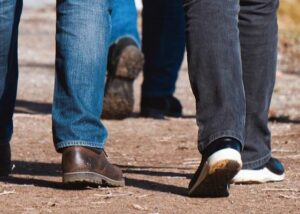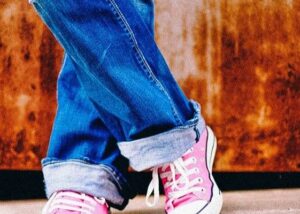Is there a Hadith in which it states the Prophet ﷺ allowed his garment to drag below the ankles?
Quran
Hadith
Islamic Text
Yes, there is an authentic Hadith in which it states the Prophet ﷺ allowed his garment to drag below the ankles when he ﷺ was rushing to the eclipse prayer.
عَنْ أَبِي بَكْرَةَ رَضِيَ اللَّهُ عَنْهُ قَالَ: خَسَفَتِ الشَّمْسُ وَنَحْنُ عِنْدَ النَّبِيِّ صَلَّى اللهُ عَلَيْهِ وَسَلَّمَ، فَقَامَ يَجُرُّ ثَوْبَهُ مُسْتَعْجِلًا، حَتَّى أَتَى المَسْجِدَ، وَثَابَ النَّاسُ، فَصَلَّى رَكْعَتَيْنِ فَجُلِّيَ عَنْهَا، ثُمَّ أَقْبَلَ عَلَيْنَا، وَقَالَ: إِنَّ الشَّمْسَ وَالقَمَرَ آيَتَانِ مِنْ آيَاتِ اللَّهِ، فَإِذَا رَأَيْتُمْ مِنْهَا شَيْئًا فَصَلُّوا، وَادْعُوا اللَّهَ حَتَّى يَكْشِفَهَا
Abu Bakrah (May Allah Most High be pleased with him) said, the Sun eclipsed whilst we were with the Prophet ﷺ. He ﷺ stood up in haste, dragging his garment until he ﷺ reached the Masjid. The people gathered around him and he ﷺ prayed a two rak’a prayer. Then it (the Sun) cleared. He ﷺ turned to us and said, ‘The Sun and the Moon are two signs from the signs of Allah (Most High). So if you see something from them (e.g. an eclipse), then pray and supplicate until the issue (eclipse) is over.’ (Sahih al-Bukhari, 5785).
The Sahih Hadith above is explicit with regards to the garment of the Prophet being dragged on the ground, when he ﷺ was rushing to the Masjid for the eclipse prayer. It is important to note that this was not the normative Sunnah of the Holy Prophet ﷺ, rather the norm with the Prophet ﷺ was to extend garments to mid-shin and not beyond. However, the Hadith has been used, by classical scholars, to prove that allowing garments to extend beyond the ankles is not Haram unless it is done out of arrogance.
Imam Ibn Mulaqin quoted the Hadith of Sayidina Abu Bakr and then this eclipse Hadith, to support the position that the prohibition on Isbaal (extending garments beyond the ankles) is predicated upon arrogance.
فيه بيان أن من سقط ثوبه بغير قصده وفعله أو جره ولم يقصد به خيلاء، فإنه لا حرج عليه في ذلك، عملًا بقوله لأبي بكر: “لست ممن يصنعه خيلاء” ألا ترى أنه – صلى الله عليه وسلم – جر ثوبه حين استعجل السير إلى صلاة الخسوف وهو مبيِّن لأمته بقوله وفعله. (التوضيح لشرح الجامع الصحيح).
In it there is clarification that if one’s garments descends without his intention or action, nor did he intend arrogance, then there is no harm in it, acting upon his statement to Abu Bakr: ‘You do not do that out of arrogance.’ Do you not see that the Prophet ﷺ did drag his garment when he was rushing to the eclipse prayer. And he ﷺ clarifies for his Ummah through his speech and action. (Imam Siraj al-Deen Ibn al-Mulaqin, al-Towdeeh Sharh al-Jami al-Saheeh).
Imam Ibn Mulaqin was not alone in using the Prophet’s ﷺ example to prove that the prohibition upon allowing garments to extend beyond the ankles is restricted to arrogance. Rather one of the earliest commentators on Sahih al-Bukhari (Imam Ibn Battaal) done the same.
ألا ترى أن النبى عليه السلام جر ثوبه حين استعجل المسير إلى صلاة الخسوف، وهو مبين لأمته بقوله وفعله. وقد كان ابن عمر يكره أن يجر الرجل ثوبه على كل حال وهذه من شدائد ابن عمر. (شرح صحيح البخارى لابن بطال)
Do you not see that the Prophet ﷺ did drag his garment when he was rushing to the eclipse prayer. And he ﷺ clarifies for his Ummah through his speech and action. Indeed Ibn Umar (May Allah Most High be pleased with them both) disliked for a man to drag his garment in all circumstances, but this is from the strictness of Ibn Umar. (Imam Abu al-Hasan Ibn Battaal, Sharh Sahih al-Bukhari).
Although most scholars do seem to hold the opinion that extending garments beyond the ankles is only prohibited if it is done in arrogance. Some scholars may well disagree. In the Nass (text) below Imam Ibn Hajr seems to have a different view. However, it is important to note that whilst he differs on the issue he does quote the evidence cited by other scholars.
This is something we can all learn from, especially when it comes to this issue. Some people who say that it is absolutely prohibited to allow garments to extend beyond the ankles, fail to mention the abundance of evidence that ostensibly contradicts their opinion.
فَقَامَ يَجُرُّ ثَوْبَهُ مُسْتَعْجِلًا فَإِنَّ فِيهِ أَنَّ الْجَرَّ إِذَا كَانَ بِسَبَبِ الْإِسْرَاعِ لَا يَدْخُلُ فِي النَّهْيِ فَيُشْعِرُ بِأَنَّ النَّهْيَ يَخْتَصُّ بِمَا كَانَ لِلْخُيَلَاءِ لَكِنْ لَا حُجَّةَ فِيهِ لِمَنْ قَصَرَ النَّهْيَ عَلَى مَا كَانَ لِلْخُيَلَاءِ حَتَّى أَجَازَ لُبْسَ الْقَمِيصِ الَّذِي يَنْجَرُّ عَلَى الْأَرْضِ لِطُولِهِ. (فتح الباري شرح صحيح البخاري)
‘So he ﷺ stood up, in haste, dragging his garment.’ This narration indicates that dragging (one’s garment) is not prohibited if it is done in a situation where one is rushing. Thus, it seems to support the idea that the prohibition is restricted to arrogance. However, there is no evidence in it for those (scholars) who restricted the prohibition to arrogance. Such that they permitted one to wear a long-shirt that drags on the ground due to its length. (Imam ibn Hajr al-Asqalani, Fath al-Bari Sharh Sahih al-Bukhari).
Imam Ibn Hajr seems to represent a minority view on this issue, as it seems most scholars do predicate the ruling of prohibition upon arrogance. Imam al-Ayni seems to represent the majority view on this issue. Commenting on the Hadith above he said:
وَفِيه دلَالَة على أَن جر الْإِزَار إِذا لم يكن خُيَلَاء جَازَ، وَلَيْسَ عَلَيْهِ بَأْس. (عمدة القاري شرح صحيح البخاري)
In it there is evidence to prove that dragging the lower garment is permitted if it is not done in arrogance, and (in such a case) there is no issue with it. (Imam Badr al-Deen al-Ayni, Umdatu al-Qari Sharh Sahih al-Bukhari).
Some people argue that this Hadith cannot be used as evidence to support the view that the prohibition on extending the garments is only applicable if one does it in arrogance. They say it is absolutely prohibited to allow garments to extend, whether one intended arrogance or not. They argue that this Hadith is not a valid proof to limit the prohibition to the intend of arrogance, since the Prophet ﷺ was rushing, and it was due to the rush the blessed garments of the Prophet ﷺ were dragging.
The response to this argument is simple. Is it permitted to do something Haram if you are in a rush? Is it permitted to engage in something prohibited to achieve something that is recommended (e.g. solar eclipse prayer)? Rather this analysis of the Hadith leads to inconsistencies and possibly absurdities. Could one then say the reason I did not cover my Owrah properly is because I was in a rush. The reason I did not pray my obligatory prayer is because I was running late to a meeting with a friend. The reason I disobeyed my parents was that I was in a hurry.
The answer to all of these questions is no. Due to the agreed upon principle that one cannot engage in something Haram in order to achieve something recommended. Therefore, the Hadith is certainly a proof for the scholars who said extending garments beyond the ankles is only prohibited if it is accompanied by an intention of arrogance.
And Allah Most High Knows Best.
– Answered by Shaykh Noorud-deen Rashid (20.01.2022)
See also:
Is it Sunnah to wear trousers to the middle of the shin?
Is it Haram to allow trousers to extend beyond the ankles?
Reconciling the Hadith about wearing trousers beyond the ankles
Hadith of Abu Bakr dragging the lower garment
See also (video):






